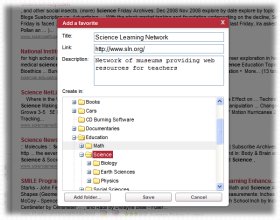|
Education
Web
Viewing 1-1 of 1 total results
into two groups: natural and human-made.*a K-1 ES2B Earth materials include solid rocks, sand, soil, and water. These materials have different observable physical properties. Describe Earth objects using appropriate terms, such as hard, soft, dry, wet, heavy, and light, to describe these mate...
1
0
into two groups: natural and human-made.*a K-1 ES2B Earth materials include solid rocks, sand, soil, and water. These materials have different observable physical properties. Describe Earth objects using appropriate terms, such as hard, soft, dry, wet, heavy, and light, to describe these materials. Sort Earth objects by one observable property (e.g., rocks by size or color).*a Compare Earth objects by at least two properties (e.g., first compare rocks by size, then by color). *a K-1 ES2C Some
18
0
http://www.k12.wa.us/CurriculumInstruct/Science/pubdocs/WAScienceStandardsFINAL.pdf#page=18
www.k12.wa.us/CurriculumInstruct/Science/pubdocs/WAScienceStandardsFINAL....
properties of materials rather than objects. Content Standards Performance Expectations Students know that: Students are expected to: K-1 ES2A Some objects occur in nature; others have been designed and processed by people. Sort objects into two groups: natural and human-made.*a K-1 ES2B Earth materials include solid rocks, <span class="highlight">sand</span>, and soil; and water. These materials have different observable physical properties. Describe Earth objects using appropriate terms, such as hard, soft, dry, wet, heavy
31
0
http://www.k12.wa.us/CurriculumInstruct/Science/pubdocs/WAScienceStandardsFINAL.pdf#page=31
www.k12.wa.us/CurriculumInstruct/Science/pubdocs/WAScienceStandardsFINAL....
into two groups: natural and human-made.*a K-1 ES2B Earth materials include solid rocks, <span class="highlight">sand</span>, soil, and water. These materials have different observable physical properties. Describe Earth objects using appropriate terms, such as hard, soft, dry, wet, heavy, and light, to describe these materials. Sort Earth objects by one observable property (e.g., rocks by size or color).*a Compare Earth objects by at least two properties (e.g., first compare rocks by size, then by color). *a K-1 ES2C Some
61
0
http://www.k12.wa.us/CurriculumInstruct/Science/pubdocs/WAScienceStandardsFINAL.pdf#page=61
www.k12.wa.us/CurriculumInstruct/Science/pubdocs/WAScienceStandardsFINAL....
useful for other purposes (e.g., rocks are heavy and strong so they are good for building walls, but they are not as useful as lighter materials for roofs). Give examples of human-made materials, including those that are changed only a little (e.g., wood and stones used for building) and those that look very different from the raw materials (e.g., metal, ceramics, and plastics). 4-5 ES2B Weathering is the breaking down of rock into pebbles and <span class="highlight">sand</span> caused by physical processes such as heating
120
0
http://www.k12.wa.us/CurriculumInstruct/Science/pubdocs/WAScienceStandardsFINAL.pdf#page=120
www.k12.wa.us/CurriculumInstruct/Science/pubdocs/WAScienceStandardsFINAL....
112 Revised Washington State K-12 Science Standards Dependent variable: The factor of a system being investigated that changes in response to the manipulated (independent) variable and is measured. Deposition of sediments: Refers to the geologic process following erosion, in which particles of <span class="highlight">sand</span> or soil are no longer transported from their source by wind or water and are added to a new landform. Describe: The skill of developing a detailed picture, image, or characterization using diagrams
|
